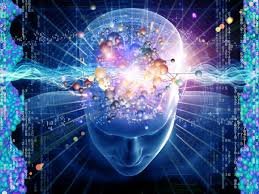A main theme in my writing and teaching (my students would say "her mantra") - is that a majority of researchers and practitioners in the field of health literacy have spent more than a quarter century identifying what people CAN'T DO. Tests and metrics of all kinds have been designed and popularized so that we can:
- count how many blanks are left on a cloze reading test;
- enumerate what health words a patient can’t read,
- identify what prescription directions they misinterpret; or
- how many calories per serving they miscalculate.
And yet, the last quarter century has seen a creative explosion in human psychology, cognitive science, linguistics and anthropology, technology use.
But the field of health literacy holds tight to the deficit model - starting with what people CAN'T DO. It seems to have very little new to say about what real people are capable of, what they negotiate and get done in their lives every day. Or at least that's not getting published and promoted. We're still into hashing out the terms "limited" vs "low" health literacy, or should it be "inadequate" or "restricted"!
Starting with what people CAN’T Do is the hallmark of a top-down model – whether it’s in education, community development, therapy or ball room dancing lessons!
Why do we focus on setting the bar at “how many calories are in a serving of ice cream?” when people are finding their way around cities, reading no-parking signs, checking out the CVS Buy 1 Get 1 Free Ads, talking about religion, politics, Covid, war and peace, life and death.
Lost, if not aggressively fracked away, is the appreciation and use of people’s knowledge, skills and meaning making, their gifts, their own personal talents, accomplishments and aspirations. To what end?
What would it take for this deficit model to go extinct?
In an exquisitely sensible Ted Talk, Cormac Russell, talks about Asset Based Community Development and says, “If we want to help people in a way that does no harm to them, their capacities and their communities, then the best place to start is with what is strong within them and within their communities.” (ASSET BASED MODELS)
I think so much of the asset based model is timely the field of health literacy. It could switch out the lens through which we see real people and allow "health literacy" to be a rich capacity.




This article is very very good I loved it and very Interesting post. Thanks for sharing the I really appreciate your post. Great job please keep sharing these helpful posts.
ReplyDeleteCare facilities for dementia patients